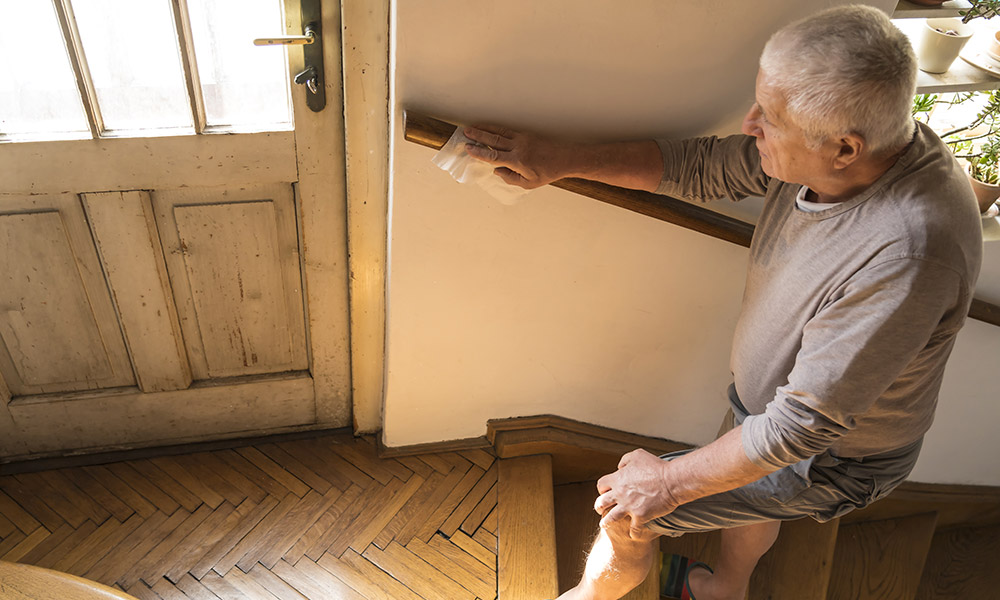
Using 3D motion capture and a robotic platform, researchers were able to identify an ideal height range of a handrail to help prevent falls in adults.
The often-overlooked handrail is getting a scientific double-take after collaborative research from the UBC Okanagan School of Engineering and the Toronto Rehabilitation Institute demonstrates how essential handrails are for fall prevention.
And how height makes all the difference.
New research, led by UBCO Assistant Professor Dr. Vicki Komisar and her colleague Dr. Alison Novak from the Toronto Rehabilitation Institute is helping to develop WorkSafe BC guidelines within the organization’s recently released Slips, Trips & Falls Prevention Manual.
Nearly 40 per cent of older adults experience falls every year. Handrails, says Dr. Komisar, are an important tool in recovering balance to avoid a bad landing.
“Every user is different, but higher handrails — between 36 and 42 inches off the ground — enable adults to recover from balance loss with better torso control than rails that are lower in height,” explains Dr. Komisar.
Falls are the leading cause of unintentional injury in adults in North America, she notes. And handrails, at an appropriate height, can help prevent those falls.
Drs. Komisar and Novak analyzed the effect of varying handrail heights on how well users could regain control of their torso after balance loss. Using 3D motion capture and the robotic platform at the Challenging Environments Assessment Laboratory at the Toronto Rehabilitation Institute, the researchers were able to identify an ideal height range of a handrail for balance recovery in adults.
The study’s findings indicated that when handrails were higher (up to 42 inches), they assisted young and older adults in remaining upright without requiring large shoulder elevation angles to reach the higher rails.
Handrails can significantly enhance balance recovery and help people avoid falls, provided that the handrail design allows users of any age to reach and grasp the rail after balance loss. The key is to be able to control their trunk by applying hand-contact forces to the rail. If the handrail is too low, a person may not be able to control their trunk to regain balance.
Dr. Komisar’s research aims to prevent falls and fall-related injuries, as well as promote safety and independence in daily activities such as walking or even getting out of bed. Her findings are helping to guide the development of building codes, accessibility standards and design guidelines for safer assistive technology and safer environmental design.
“We’re excited to see the results of my doctoral work help guide the design of safer walkways for preventing falls,” she says.
The research was funded by a Canadian Institutes of Health Research Operating Grant, held by Dr. Novak. Dr. Komisar was supported in part by the AGE-WELL Network of Centres of Excellence Graduate and Postdoctoral Awards and the Michael Smith Foundation for Health Research Postdoctoral Awards. Their research was recently published in Human Factors: The Journal of Human Factors and Ergonomics Society.